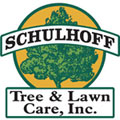The Centennial State enjoys nearly 300 days of sunshine every year. Cloudless, sunny days mean low humidity and little precipitation. While these conditions create excellent recreational opportunities, they don’t help you grow a lush, beautiful garden.
Colorado’s high altitude complicates our growing season. Temperatures fluctuate from very cold during the long winter to very hot in the short summer. Our state’s soil creates similar challenges. It’s often not very deep or nutrient-rich. But there’s hope yet.
With a little extra planning, you can create a gorgeous, high-yield garden in your area. First, you’ll need to learn about Colorado’s climate and soil issues. Then, you’ll need to consider your garden site and the plants that go in it.
We walk you through everything you need to know to get started in this guide to high-altitude gardening.
Understand Colorado’s Climate and Soil
The Front Range’s mile-high elevation means plants receive a large amount of sun exposure. Your garden’s soil, and your vegetables, can dry out easily. Your garden is also subject to rapid fluctuations in temperature.
You can combat dryness and variations in temperature. First, plant your garden in a raised bed. The raised bed keeps your vegetables above the frost line. Also, plant your vegetables in rows within the raised bed, so they’ll stay warm during the cold, dry evenings.
Second, install cold frames around the bed. They will protect your plants from winds. The frame’s vents also keep your growing plants cool during hot, summer days.
Just like our climate makes gardening more complicated, so does our nutrient-deficient soil. Much of the Front Range has soil with a high pH balance, a large amount of iron, and nutrient-suffocating clay. Take a sample of your soil and send it to the Colorado State University extension for testing. The test’s results will determine whether you need to completely remediate the soil, just add organic matter, or truck in soil for your garden.
Choose Your Garden Site Carefully
Your north-facing front yard holds snow, while your south-facing backyard lights up like a tanning bed. This isn’t a unique problem. Where the sun rises and sets plays more of a part the higher up you go in elevation.
That said, your garden needs sunlight. Avoid planting on north-facing aspects because your seedlings won’t receive enough sunlight to grow. A south-facing garden, depending on the vegetables you chose to grow, might see too much sun. East- and west-facing garden sites provide light in the morning and afternoon, respectively. And those areas won’t leave your vegetables in the shade or frying them.
Follow Our Best Practices for High-Altitude Gardening
Now that you understand what you’re up against, follow these tips to start your high-altitude garden:
- Review the USDA’s Plant Hardiness Zone Map.
- Identify the number of frost-free days your climate receives and its minimum low temperature.
- Choose plants that will mature within that number of days. Leafy green vegetables and root vegetables are great choices for high-altitude gardens.
- Start seeds indoors to prevent hindered plant growth due to spring frosts.
- Harden your seedlings by taking them out for a few hours each day, slowly adding more time outside over the course of two weeks.
- Once you’ve planted your seedlings in the ground, cover them at night and during cold days with black plastic.
- If you choose to not to start your seeds indoors and prefer to plant them directly into the garden, apply mulch.
- If you forget to cover your plants on a cold night, water them before the sun hits them.
A Denver-based landscaper can assist you in choosing appropriate plants and garden sites and installing raised beds and cold frames. With the help of a professional and these suggestions, you can complete the tasks necessary to prepare your high-altitude garden.
